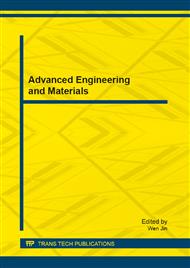p.416
p.422
p.429
p.435
p.440
p.447
p.452
p.457
p.462
Investigations of an Ion Transport Membrane Reactor Specially Designed for a Power Cycle
Abstract:
This work is aiming to investigate the dependence of the performance of a 3-D ITM reactor depends on the operating conditions and flow configuration. This work is a design problem, where the oxygen separation requirements of the ITM reactor are specified, and then the reactor is designed to meet them. The effect of subdividing the total reactor length into a number of parallel subunits rather than only one unit on the flow characteristics and membrane stability is studied. The results indicate that the average wall temperature is higher in the case of counter current flow than in the case of co-current flow; this is attributed to the effective heat transfer in the case of counter-current flow, and as a result, the average partial pressure driving force was found to be much lower in the case of counter current flow in order to get the same average flux for both flow configuration. The present results indicate that the use of parallel design instead of series design will result in shorten the channel length, reduce pressure drop through the system and will result in more stable operation of the membrane. Also, this design takes the benefit of high oxygen permeation flux at channel inlet which will reduce the total size of the reactor.
Info:
Periodical:
Pages:
440-446
Citation:
Online since:
February 2013
Authors:
Price:
Сopyright:
© 2013 Trans Tech Publications Ltd. All Rights Reserved
Share:
Citation:



